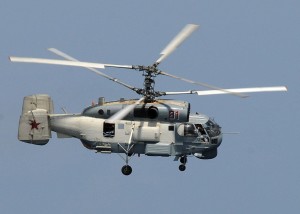
As it upgrades and expands land forces aviation, Russia also is investing in naval aviation, including plans to modernize the flagship Ka-27 naval helicopter and to start the design of new models.The Ka-27 was designed in the 1960s and has become significantly outdated.The Ka-27 is mostly intended for landing on destroyers and corvettes and development of heavier naval rotorcraft has become an acute necessity for the Russian navy, which plans to build at least two helicopter carriers.Two years ago the…

 By
By 








